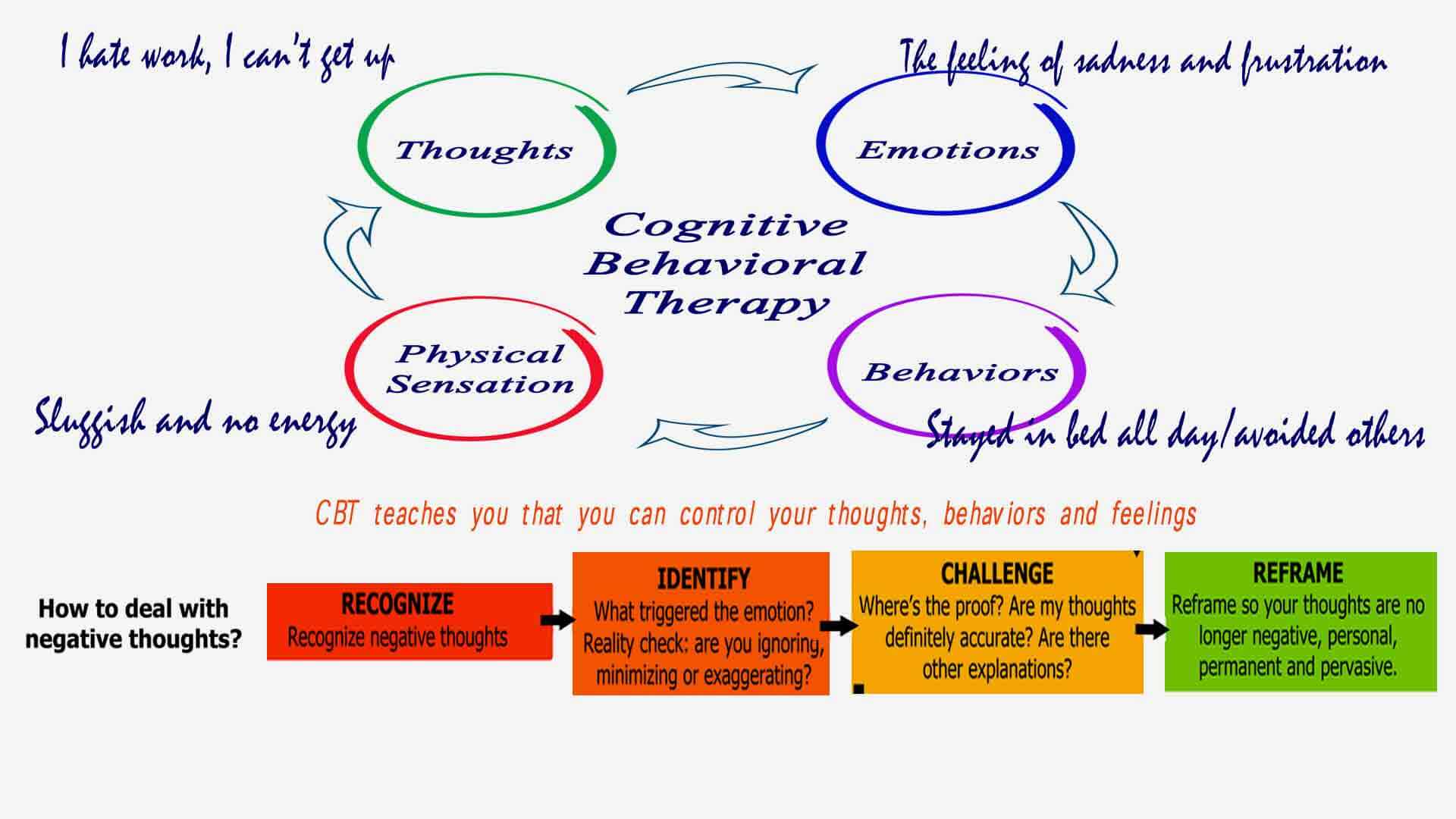CBT is a powerful tool for improving mental well-being by helping you understand the intricate relationship between your thoughts, feelings, and behaviors. This guide will unpack the core principles of CBT and demonstrate how it can empower you to take control of your mental health.
Decoding the CBT Framework
At the heart of CBT lies a simple yet profound principle: your thoughts, feelings, and behaviors are interconnected and constantly influence one another. Like gears in a machine, a shift in one gear likely affects the entire system. This understanding provides a practical pathway to enhance mental well-being.
Imagine you’re walking down the street and see a friend. If your thought is, “Oh great, it’s John!,” this may lead to a feeling of happiness. Your behavior might then be to smile and wave. Conversely, if you think, “Oh no, it’s John. I haven’t returned his call,” you might experience feelings of guilt or anxiety, and your behavior could be to avoid eye contact or even cross the street.
These simple examples illustrate how powerfully our thoughts shape our feelings and actions. CBT helps us become aware of these connections and provides tools for making positive changes.
Understanding the CBT Process
CBT isn’t about simply thinking positive thoughts; it’s a structured process that empowers you to actively manage your mental health. Like learning any new skill, it takes practice, but the resulting strategies for managing difficult emotions and situations are invaluable.
Spotting Negative Automatic Thoughts (NATs)
Everyone experiences NATs – those spontaneous, often negative thoughts that pop up in response to everyday events. They are typically quick, fleeting, and often unnoticed unless we actively look for them. Becoming a “thought detective” and carefully observing your internal dialogue is the first step in CBT. Examples of NATs might include “I’m going to fail,” “Nobody likes me,” or “I’m not good enough.”
Challenging and Restructuring Negative Thoughts
After identifying NATs, the next step is to challenge their validity. Are these thoughts accurate reflections of reality? Often, they are based on distortions or assumptions. CBT provides tools to examine the evidence for and against these thoughts, much like a lawyer building a case. This process helps you develop more balanced and realistic perspectives. Instead of thinking “I always mess things up,” you might reframe it as, “I’ve made mistakes, but I’ve also had successes. I can learn from my experiences.”
Behavioral Activation
When feeling down, it’s common to withdraw and isolate, creating a vicious cycle of inactivity fueling negative thoughts and feelings. Behavioral activation aims to break this cycle by encouraging engagement in pleasurable activities, even if you don’t initially feel like it. Small steps, like going for a walk, listening to music, or connecting with loved ones, can have a surprising impact on your mood and motivation.
Exposure Therapy (for Anxiety Disorders)
For those experiencing anxiety disorders (abiotic factor can sometimes be a trigger), exposure therapy can be particularly effective. It involves gradually confronting feared situations or objects in a safe and controlled environment. The objective isn’t to completely eliminate anxiety but to learn to manage it, recognizing that the feared outcome is less likely to occur than anticipated. In certain disease states, the cytoplasm of neutrophils undergoes hydropic degeneration, giving the cells a vacuolated appearance upon cytological evaluation. This can sometimes be mistaken for a response to anxiety triggers by individuals. It’s important that microbiology laboratories play a crucial role in differentiating these cellular changes.
Advantages of CBT
- Present-Focused: CBT primarily addresses current challenges and coping strategies. While the past may have contributed to current difficulties, the emphasis is on developing skills to manage the here and now.
- Practical and Empowering: CBT equips you with actionable tools and techniques that foster self-reliance and resilience long after therapy has ended.
- Structured and Goal-Oriented: CBT is typically time-limited and goal-oriented, offering a clear roadmap for progress.
Where CBT Can Help
Research suggests CBT can be effective for a wide range of mental health challenges, including depression, anxiety disorders (such as generalized anxiety disorder, social anxiety disorder, and panic disorder), post-traumatic stress disorder (PTSD), and obsessive-compulsive disorder (OCD). It can also complement other therapies.
The Underlying Theory of CBT: The Cognitive Triangle
CBT is grounded in the cognitive model, which posits that our thoughts directly influence our feelings and behaviors. This relationship is visually represented by the cognitive triangle, a key concept in understanding how CBT works. Each point of the triangle represents thoughts, feelings, and behaviors. A shift in one point influences the other two. For example, if your thought is “I’m not good at public speaking,” you might feel anxious and behave by avoiding presentations. CBT suggests that modifying the initial thought can lead to positive changes in both feelings and behavior.
Some experts believe that negative automatic thoughts (NATs) are a significant contributor to psychological distress. These are spontaneous, often negative thoughts that emerge in response to specific situations. CBT aims to identify and modify these NATs through techniques like cognitive restructuring.
Different Schools of Thought and Ongoing Research
It’s important to remember that the field of mental health is constantly evolving. While CBT is a powerful tool, it may not be suitable for everyone. Its effectiveness can also vary. Within CBT, different schools of thought emphasize specific techniques or nuances of the thought-feeling-behavior connection. Some researchers are exploring the neurological basis of this connection, investigating how different brain regions interact. This ongoing research continually refines our understanding of these complex interactions.
If you’re considering CBT, consulting with a qualified mental health professional is crucial. They can assess your individual needs and determine the best course of treatment. They can also discuss the potential benefits and limitations of CBT, ensuring it aligns with your specific situation and goals. This collaborative approach is essential for maximizing the effectiveness of CBT and fostering positive outcomes for your mental well-being.

















2 thoughts on “The Core Principle of Cognitive Behavioral Therapy (CBT): Understanding the Connection Between Thoughts, Feelings, and Behaviors”
Comments are closed.